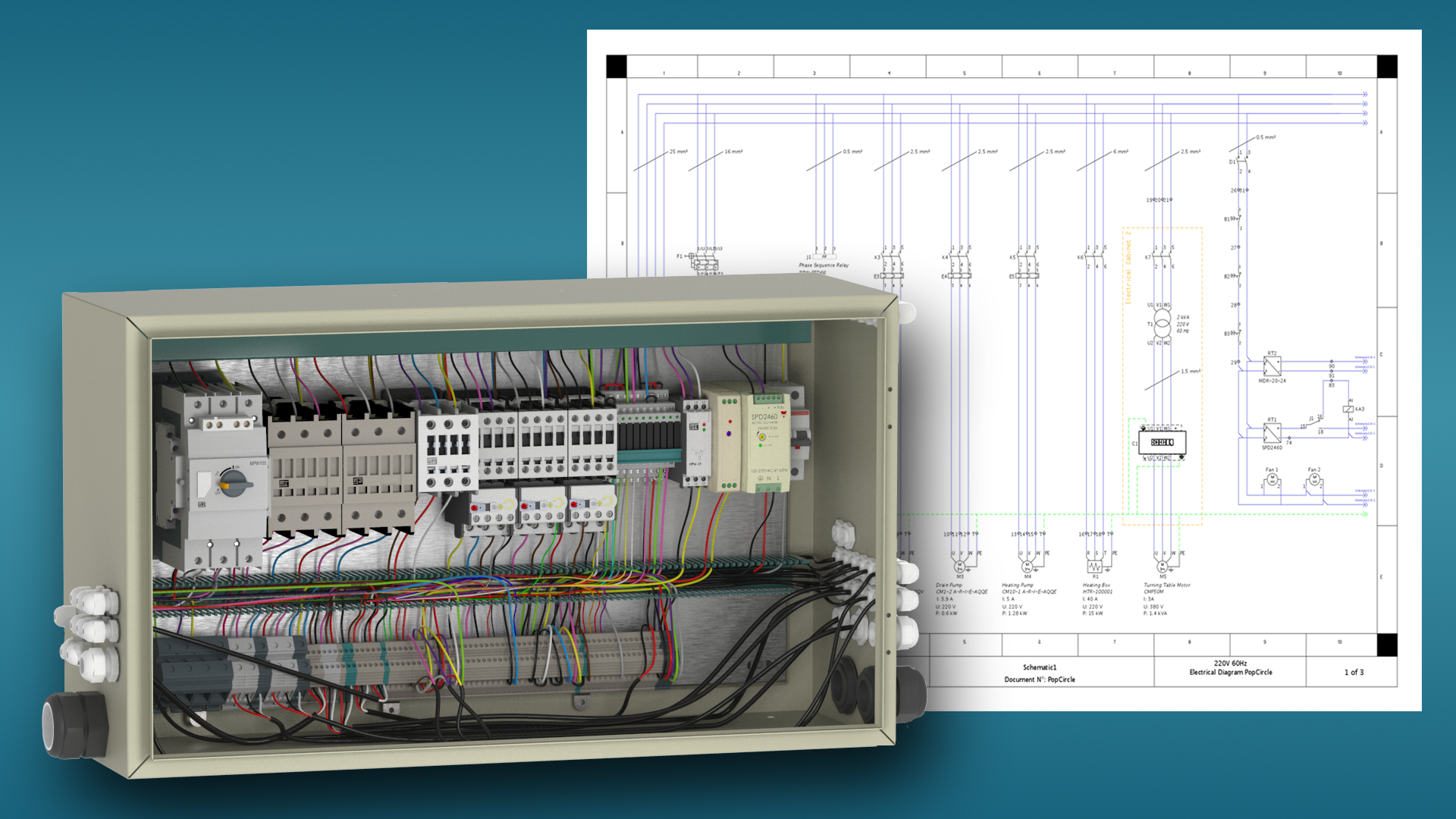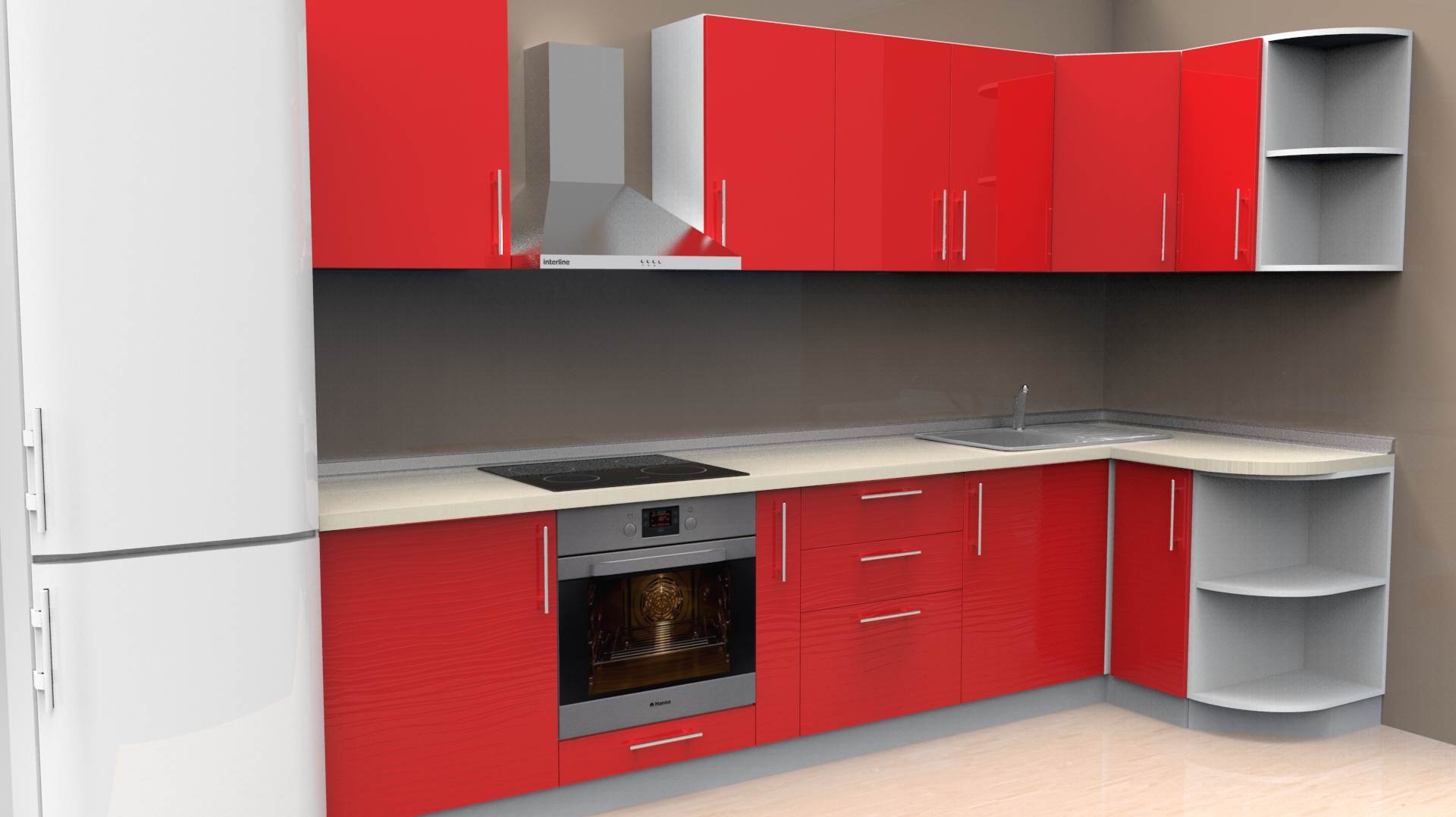Top Free Electrical Cabinet Design Software Options

Finding suitable free software for electrical cabinet design can be challenging, as many robust options are commercially licensed. However, several free packages offer basic functionality, suitable for smaller projects or educational purposes. This analysis compares three leading free options, focusing on their capabilities, limitations, and user experience.
Free Electrical Cabinet Design Software Comparison
The following table compares three free electrical cabinet design software packages. Note that the “free” designation may involve limitations on features or project size compared to paid alternatives. The user interface rating is subjective and based on general user feedback and reviews.
| Software Name | Key Features | Limitations | User Interface Rating |
|---|---|---|---|
| (Software A – replace with actual software name)* | Basic 2D drawing tools, component libraries (limited), simple wiring diagrams. | Limited component library, lacks advanced features like 3D modeling or complex calculations, potentially unstable. |   |
| (Software B – replace with actual software name)* | Intuitive interface, supports basic symbols, some automation features for simple layouts. | Limited customization options, may lack support for specific industry standards or components. |    |
| (Software C – replace with actual software name)* | Open-source, extensible via plugins, potential for community support. | Steeper learning curve due to open-source nature, potentially less polished interface, requires technical proficiency. |   ½ ½ |
*Replace with actual names of three freely available electrical cabinet design software packages. This response cannot provide specific software recommendations due to the ever-changing landscape of available software and the potential for bias. Users should conduct independent research to identify suitable options.
Installation Process for (Software B – replace with actual software name)*
The installation process for free software can vary significantly. However, a typical process might involve these steps:
- Download the software installer from the official website. Verify the authenticity of the download source to avoid malware.
- Run the installer executable. Accept the license agreement and follow the on-screen instructions.
- Choose the installation directory. The default location is usually acceptable, but you can specify a different folder if desired.
- Select any additional components or features to install. This may include tutorials, sample files, or optional plugins.
- The installer will copy the necessary files and create shortcuts on your desktop or start menu.
- After installation is complete, launch the software to verify it’s working correctly.
*Replace with actual software name. These steps are a general guideline; the exact process will depend on the specific software package.
Simple Electrical Cabinet Layout Design
This example describes a simple electrical cabinet layout designed using a hypothetical free software package. The cabinet houses a circuit breaker, a contactor, and a terminal block.
The cabinet’s internal dimensions are 30cm (width) x 20cm (depth) x 15cm (height). The circuit breaker (10cm wide, 5cm high) is mounted on the top left, 2cm from the top and left edges. Below the circuit breaker, centered horizontally, is the contactor (8cm wide, 6cm high), leaving a 1cm gap between the breaker and the contactor. The terminal block (15cm wide, 4cm high) is mounted at the bottom, centered horizontally.
Wiring is depicted using straight lines. The incoming power supply connects to the circuit breaker’s input terminals. The circuit breaker’s output connects to the contactor’s coil terminals. The contactor’s power terminals connect to the load (not shown within the cabinet). The terminal block provides connection points for various wires related to sensors, actuators, or other components (not shown in detail). The wiring diagram follows standard practices, ensuring clear labeling and avoidance of crossings. The software would allow the user to label these components and wires for clarity.
Utilizing Free Software for Different Cabinet Types

Free electrical cabinet design software offers a valuable tool for professionals and hobbyists alike, enabling the creation of detailed designs without significant upfront costs. This allows for experimentation and iterative design processes before committing to manufacturing. The selection of appropriate software depends largely on the complexity of the project and the specific features required.
Industrial Control Panel Design, Electrical cabinet design software free
Designing an industrial control panel necessitates careful consideration of component placement, wiring routing, and adherence to stringent safety standards. Free software packages, while potentially lacking some advanced features of commercial options, can effectively manage the design process for simpler panels.
- Component Placement: The software should allow for precise placement of components such as PLCs, relays, circuit breakers, and terminal blocks. Consider using a grid system to ensure accurate alignment and maintain a clean layout. Careful planning of component placement is crucial to minimize wiring length and improve maintainability.
- Wiring Diagrams: The software should facilitate the creation of wiring diagrams, allowing users to define connections between components. Clear labeling and consistent use of wire colors are essential for readability and troubleshooting. Use of automated wiring features can help to identify potential conflicts or errors.
- Enclosure Selection: The software may offer a library of standard enclosure sizes and types, assisting in selecting an appropriate enclosure based on component dimensions and environmental considerations. Ensure adequate space for components, wiring, and ventilation.
Electrical cabinet design software free – Generating a Bill of Materials (BOM) is crucial for accurate procurement. The software should provide tools to automatically generate a BOM based on the placed components.
| Component | Quantity | Description |
|---|---|---|
| PLC | 1 | Siemens S7-1200 |
| Relay | 4 | 24VDC, 10A |
| Circuit Breaker | 2 | 20A, 240VAC |
| Terminal Block | 3 | 12-position |
Adherence to relevant electrical codes, such as NEC (National Electrical Code) in the US or IEC (International Electrotechnical Commission) standards internationally, is paramount. For industrial control panels, proper grounding, short-circuit protection, and adequate ventilation are critical safety aspects. Miscalculations can lead to equipment failure, fire hazards, or even injury.
Residential Breaker Box Design
Designing a residential breaker box primarily involves selecting appropriate circuit breakers based on the load requirements of different circuits within a home. Free software can be used to create a visual representation of the breaker panel layout.
- Circuit Breaker Selection: The software can assist in selecting circuit breakers based on amperage requirements for various circuits (lighting, appliances, outlets). It’s crucial to comply with local electrical codes to ensure safety and prevent overloading.
- Panel Layout: The software should allow for the arrangement of circuit breakers within the panel, ensuring sufficient space and clear labeling. This visual representation helps avoid conflicts and ensures easy identification of individual circuits.
- Grounding and Bonding: The design should incorporate proper grounding and bonding techniques to protect against electrical shocks and potential hazards. The software should facilitate visualization of these connections.
The BOM for a residential breaker box will be relatively straightforward, mainly consisting of circuit breakers and the enclosure itself.
| Component | Quantity | Description |
|---|---|---|
| Breaker Box | 1 | 200A, 240VAC |
| 15A Circuit Breaker | 8 | 120VAC |
| 20A Circuit Breaker | 4 | 120VAC |
Compliance with the National Electrical Code (NEC) is mandatory for residential installations. Incorrect breaker sizing or improper grounding can lead to fire hazards or electrical shocks, potentially resulting in serious injury or property damage.
Server Rack Design
Designing a server rack involves considering the physical dimensions of servers, network equipment, and cabling. Free software can assist in visualizing the rack layout and ensuring proper airflow.
- Equipment Placement: The software should allow for the placement of servers, switches, routers, and other network equipment, considering their weight and dimensions. Careful planning is essential to ensure adequate cooling and accessibility.
- Cable Management: The software may offer tools to visualize cable routing, helping to minimize clutter and improve airflow. Proper cable management is critical for preventing overheating and ensuring efficient operation.
- Power Distribution: The design should incorporate a power distribution unit (PDU) and plan for power connections to each piece of equipment. The software should allow for visualization of power connections and potential overload situations.
The BOM for a server rack will vary significantly depending on the specific equipment being installed.
| Component | Quantity | Description |
|---|---|---|
| Server Rack | 1 | 42U, 19-inch |
| Server | 2 | Dell PowerEdge R740 |
| Network Switch | 1 | Cisco Catalyst 2960X |
| PDU | 1 | 15A, 120VAC |
While not directly covered by electrical codes in the same way as control panels or residential boxes, server rack design should still consider safety aspects such as proper grounding, adequate ventilation, and fire suppression systems. Overheating can lead to equipment failure and data loss. Improper grounding can result in electrical hazards.
Advanced Features and Limitations of Free Software: Electrical Cabinet Design Software Free

Free electrical cabinet design software offers a valuable entry point for beginners and smaller projects. However, professionals working on complex projects often find limitations in their capabilities compared to paid software. These limitations stem from the absence of certain advanced features and the reduced computational power often associated with free tools. Understanding these differences is crucial for choosing the right software for a given task.
While free software provides basic functionality like component placement and wire routing, several sophisticated features are typically reserved for paid versions. These features significantly enhance efficiency and accuracy, especially in complex designs.
Advanced Features Absent in Free Software
Three significant advanced features commonly found in paid electrical cabinet design software, but generally missing from free alternatives, are automated wire routing optimization, comprehensive component libraries, and integrated bill of materials (BOM) generation with advanced reporting capabilities. Automated wire routing optimization algorithms significantly reduce design time and improve wiring neatness by finding the shortest and most efficient paths. Comprehensive component libraries include detailed 3D models and specifications, enabling precise visualization and accurate estimations. Finally, advanced BOM generation produces detailed reports including part numbers, quantities, and costs, crucial for procurement and project management.
Challenges Designing a Complex Electrical Cabinet with Free Software
Let’s consider designing a complex electrical cabinet for a small industrial facility. This system might include multiple subpanels, various types of components (contactors, relays, PLCs, etc.), and intricate wiring interconnections. Using free software to tackle such a project presents several challenges.
The following points highlight difficulties encountered when attempting to design this complex electrical cabinet using only free software:
- Limited Component Library: Free software often lacks the extensive component libraries found in paid software. Finding accurate 3D models for specific components may prove difficult, leading to inaccurate estimations of cabinet space and potential interference issues.
- Manual Wire Routing Difficulties: Manually routing wires in a complex system with multiple subpanels and numerous interconnections becomes incredibly time-consuming and prone to errors. The lack of automated routing optimization significantly increases design time and the risk of design flaws.
- Absence of Advanced Reporting: Generating a comprehensive bill of materials (BOM) and other reports, such as wiring diagrams and panel schedules, is often limited or non-existent in free software. This makes procurement and project management significantly more challenging.
Rewritten Article on Free Electrical Cabinet Design Software
Finding the right electrical cabinet design software can be a game-changer. Free options provide an accessible entry point, perfect for learning the basics or handling smaller projects. Several excellent free programs offer core features like component placement and basic wiring diagrams. These tools are ideal for students, hobbyists, or professionals tackling simple designs. However, limitations exist. Complex projects demand the advanced features typically found in commercial software. For example, creating a control panel for a large industrial machine using only free software would quickly highlight the need for more robust features like automated wire routing and comprehensive component libraries. The absence of these advanced features significantly increases design time and error potential. Careful consideration of project scope and complexity is crucial when selecting software. The best choice depends entirely on the project’s specific requirements. Free software shines for simple designs, while professional-grade projects often benefit from the efficiency and precision of paid options.
